11 Rare Milk Glass Pieces That Can Sell for Surprising Prices
Milk glass pieces have a special charm that draws people in with their soft white glow. Many collectors enjoy the way these pieces bring a gentle touch to shelves and tables at home. The designs feel warm and familiar, which is why people continue to treasure them. As you look through the different styles and shapes, you may find a piece that sparks your curiosity.
This post may contain affiliate links, which helps keep this content free. Please read our disclosure for more info.
Fenton Hobnail Milk Glass Epergne Centerpiece
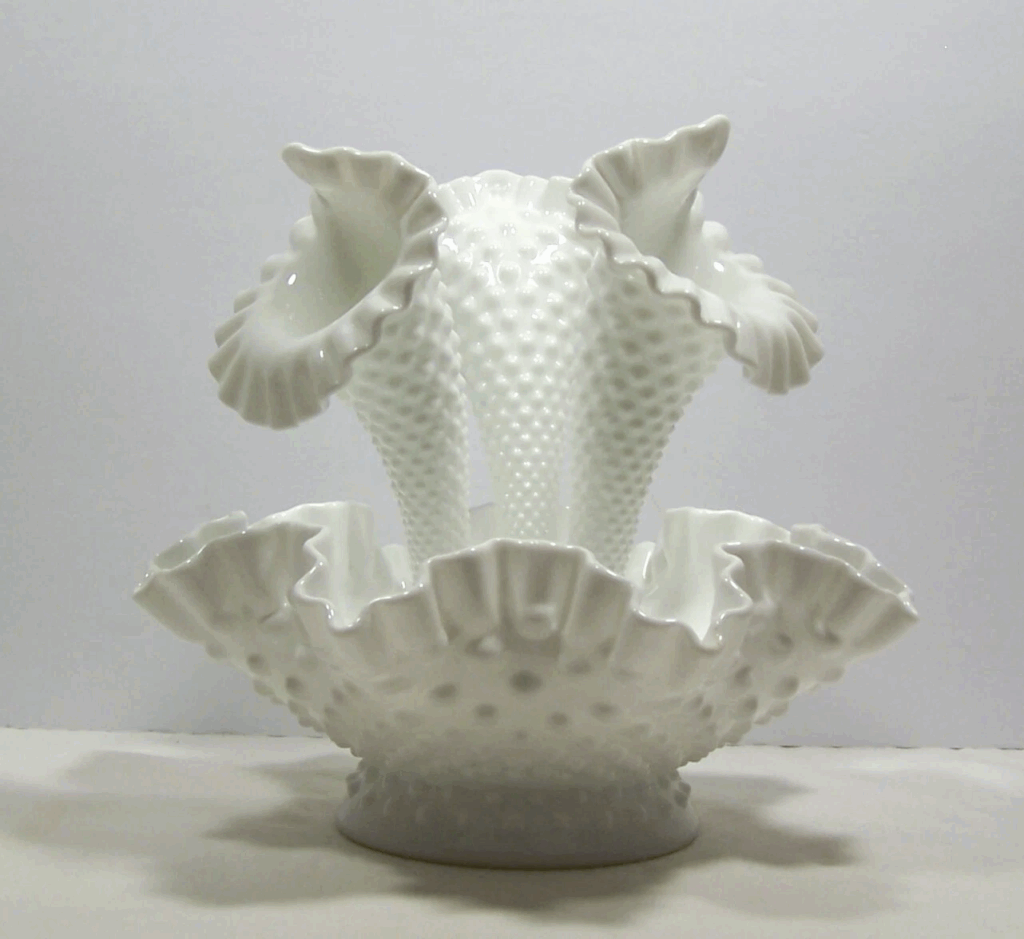
Dating from around the 1950s and 1960s, Fenton hobnail epergne centerpieces are a favorite on dining tables and sideboards. These pieces often have a ruffled bowl with several trumpet vases that sit in the center. The look feels dramatic without being too heavy, which helps them stand out on a shelf or table. Collectors watch for complete sets with all horns in good shape. In many online sales, a nice example can bring around $100 to $200 depending on size and condition.
What makes this centerpiece able to sell for surprising prices is the mix of decoration and function. You can use it with flowers for a special occasion or leave it empty as a display piece. Milk glass versions with crisp hobnail bumps and bright white color tend to do especially well. Pieces that come with original labels or boxes can draw higher offers. When you add everything up, it is easy to see why collectors feel comfortable paying in the low to mid hundreds for the right epergne.
Fenton Poppy Milk Glass Gone with the Wind Lamp
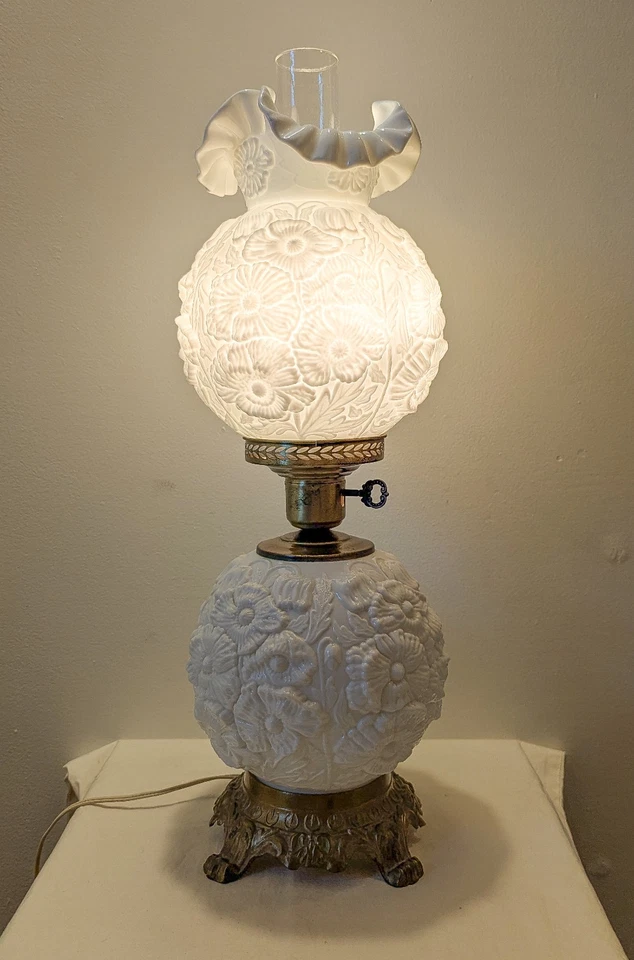
Among milk glass lamps, the Fenton poppy Gone with the Wind design from the late 1960s and 1970s has a special presence. It usually features a large rounded base and matching globe shade with raised poppy flowers. These lamps were often sold as statement pieces for parlors and living rooms. Today, they still light up a room as much as any modern lamp. Many clean examples reach the $300 to $450 range, and some go higher when the pattern and wiring are in great shape.
Collectors keep an eye out for lamps that still have their original glass chimney and hardware. A white milk glass version feels classic, while rare colors step into higher price territory. Chips, cracks, or missing parts can bring the value down fast, so condition really matters. When you see one glowing on a side table, it becomes clear why buyers are willing to pay strong prices. For someone who loves vintage lighting, this lamp can feel like the star of a collection.
Atterbury Swan Covered Dish with Glass Eyes

From the late 1800s, Atterbury swan covered dishes show how early makers used milk glass for both charm and utility. The swan often sits in a lattice or basket style base, with tiny glass eyes that give it character. These pieces were used as candy or trinket dishes in Victorian homes. Today, collectors enjoy them as display pieces for hutches and curio cabinets. Depending on size and eye detail, prices often range from about $60 to $150 for a nice example.
The surprising part is how quickly value climbs when the dish is crisp white with no damage. Swan dishes that still show strong feather detail and a clean rim tend to sell first. Scarcer color versions or unusual bases can climb a bit higher. Small flaws are common due to age, so finding one with minimal wear feels like a small victory. Because of that, serious buyers do not mind paying well above casual thrift store prices when they see a good one.
Atterbury Milk Glass Owl Covered Dish
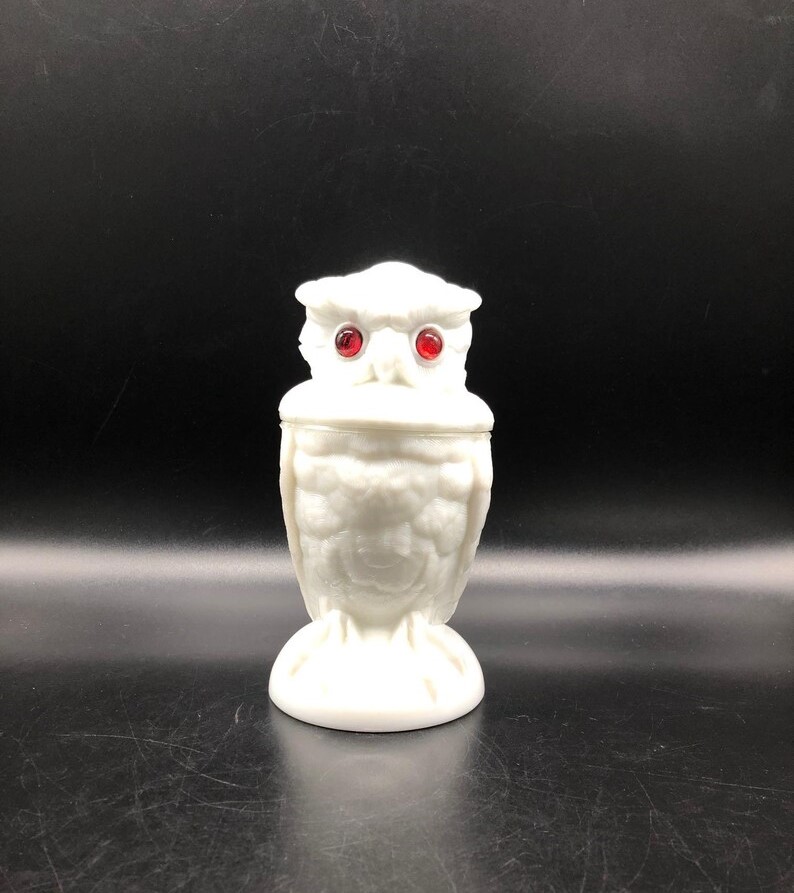
Dating from the same general era, the Atterbury owl covered dish is a charming piece that captures Victorian taste. The owl lid usually rests on a round or oval base and may appear in white or pale blue milk glass. Collectors appreciate the raised feather detail and thoughtful facial features. Original pieces that still show clear mold lines and strong color draw the most attention. While damaged lids might sell for $15 to $30, complete dishes in good condition can reach $80 to $150 or more.
Buyers often watch auctions and antique sites for these owls because they do not appear every day. Blue versions and examples with especially crisp detail feel extra special. Minor chips under the lid rim are often accepted if the rest of the dish displays well. When an owl dish is clean, well photographed, and clearly identified, bidding can move quickly. For a piece that once sat quietly on a Victorian dresser, that modern interest comes as a pleasant surprise.
Westmoreland Milk Glass Lion Covered Dish
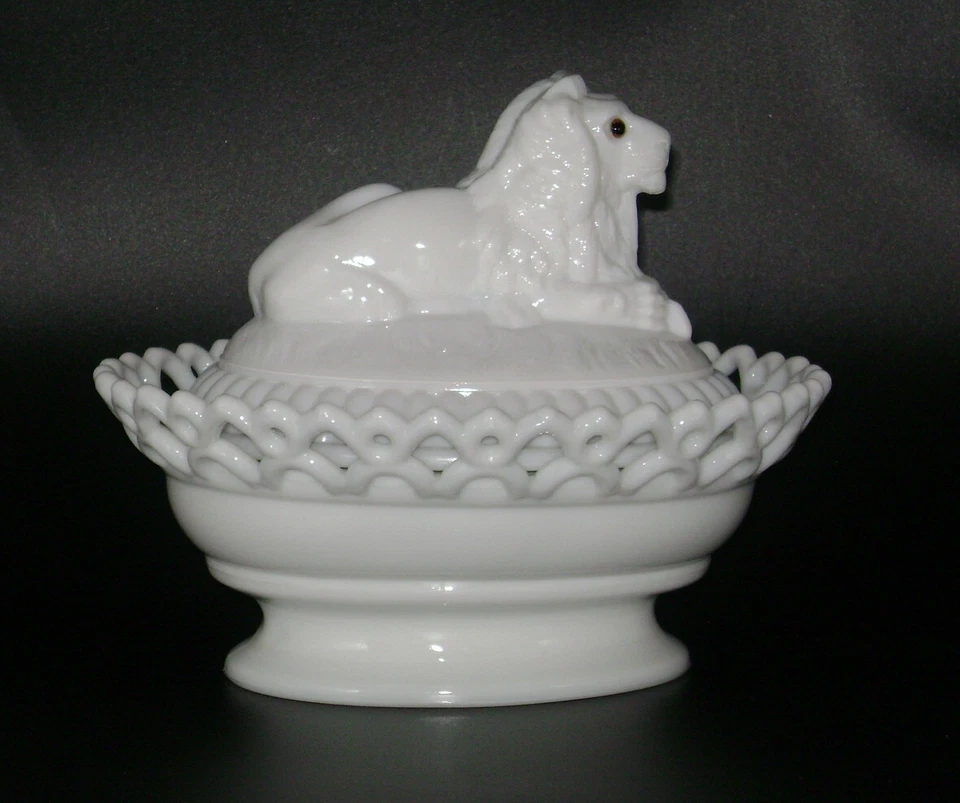
From the 1920s through the mid twentieth century, Westmoreland produced a stately lion covered dish that still turns heads. The lion figure rests on a rectangular milk glass base, often with the company mark on the underside. These pieces were sometimes made for organizations or special orders, which adds interest for collectors. The figure has a strong profile that looks impressive on a bookshelf or mantel. Current asking prices often sit around $100 to $150 when the lion and base are both in good condition.
What helps this dish reach surprising price levels is the combination of subject and quality. Many buyers love animal forms, and a lion feels powerful and rare in milk glass. Examples with bright, even color and no staining tend to sell fast. Any chips on the ears or tail can drop the value because they draw the eye. When you find one that checks all the boxes, it quickly feels like a centerpiece item in a milk glass collection.
Portieux Vallerysthal White Opaline Hen on Nest Butter Dish
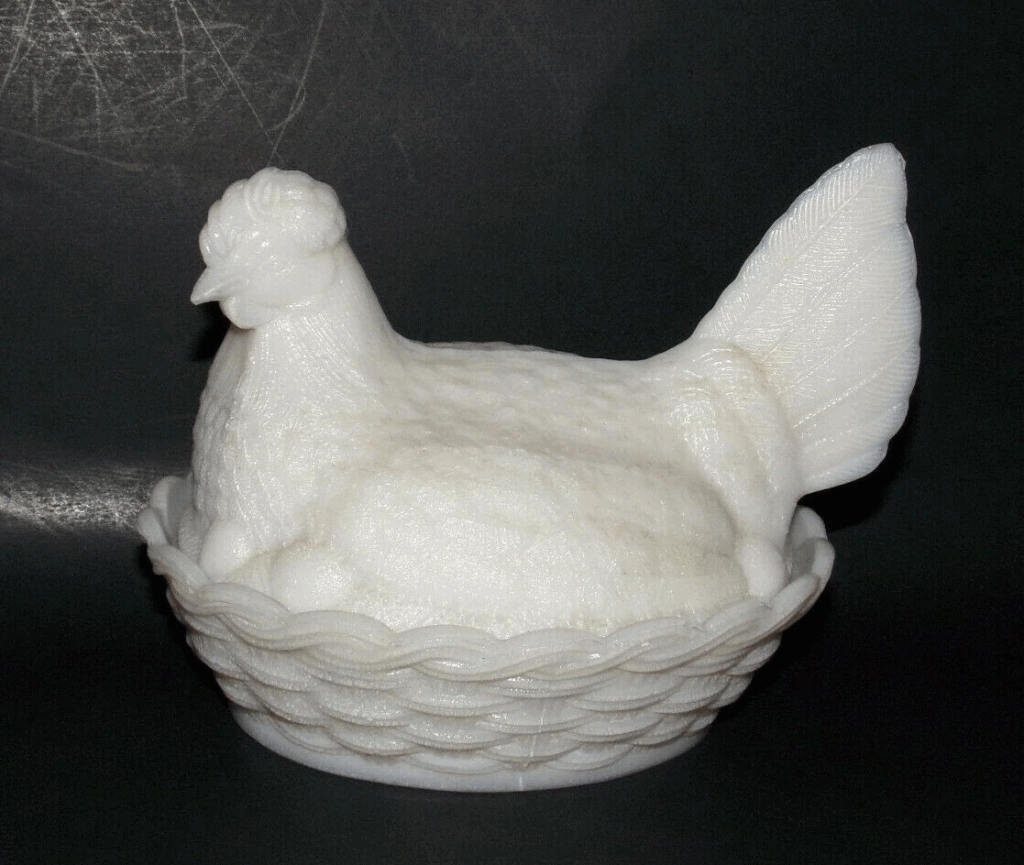
Another standout from the same French maker is the white opaline hen on nest butter dish, often linked to the late nineteenth and early twentieth centuries. This version trades the blue tint for a soft, glowing white that feels refined on a dining table. The dish usually features a raised hen sitting over an oval or round base. Collectors admire how the light plays across the surface, giving it depth even without color. Rare and well documented examples can reach $150 to $250 when sold through specialist dealers or high end online listings.
The charm of this butter dish lies in both form and story. It recalls a time when tableware was decorative as well as useful. When the dish is free from cracks and the lid still fits snugly, buyers are much more willing to spend. Provenance, such as known origin in France or long family ownership, can nudge the value higher. For someone building a small group of special hens on nest, this white opaline version feels like a prize.
Westmoreland Paneled Grape Milk Glass Compote or Pitcher

From the mid twentieth century, Westmoreland’s paneled grape pattern became a classic for milk glass lovers. Compotes, pitchers, and candy dishes in this pattern show clusters of grapes and leaves on tall paneled sides. The design works nicely for serving desserts or holding small decorative items. While many pieces were produced, some forms and sizes are harder to track down. Common items might sell for $20 to $40, while scarce shapes or larger pieces can climb toward $60.
The pricing can come as a surprise to people who think of milk glass as a bargain only. Collectors pay more for items marked clearly with the Westmoreland logo and showing bright white color. Matching sets, such as a pitcher with several tumblers, can bring a premium when sold together. Chips on rims or feet will hold the price down, so sellers often highlight clean edges. For someone building a paneled grape display, a rare form can be worth paying higher retail.
Fenton Hobnail Milk Glass Console Bowl with Candle Holders
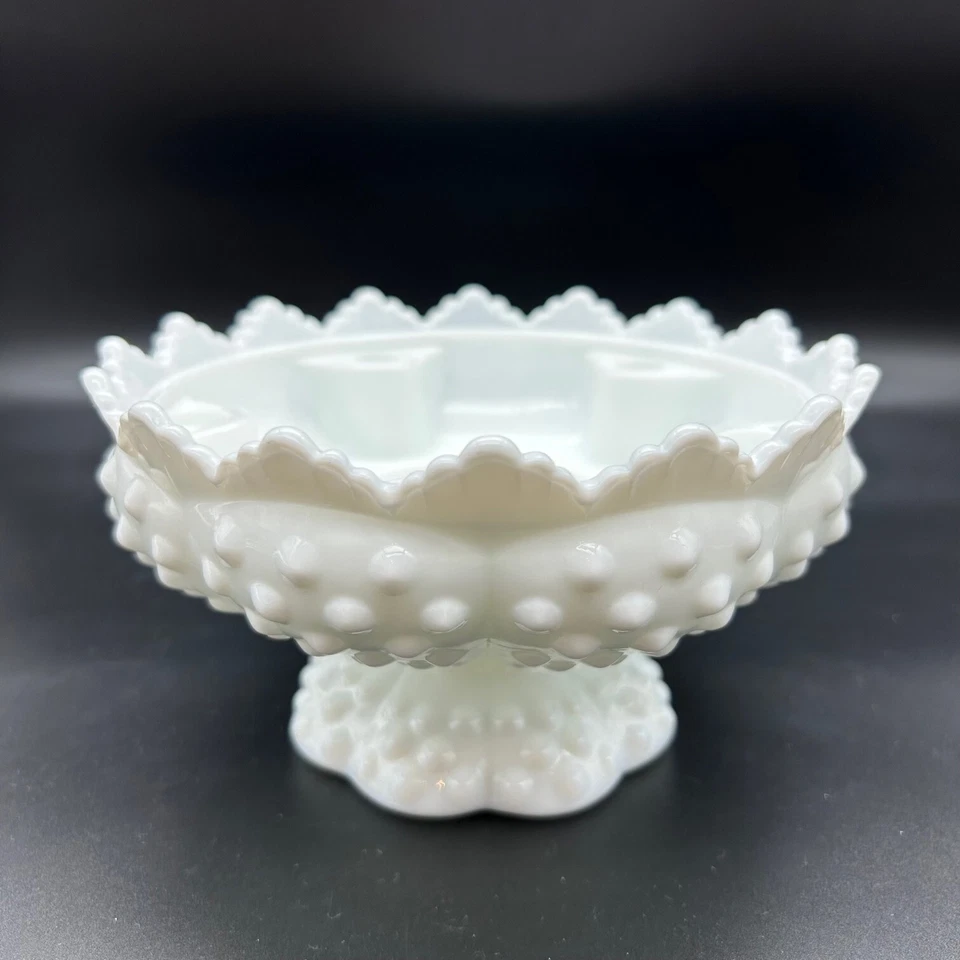
Through the mid twentieth century, Fenton produced hobnail console bowls and matching candle holders that are still popular today. These sets usually feature a low, wide bowl with hobnail bumps and one or two candle holders in the same pattern. They were made to sit on buffet tables or mantels as complete centerpieces. Console bowls by themselves can be found fairly often, while full sets show up less. Typical console pieces might start around $20, but full sets in strong condition can reach $60 to $100 or more.
Collectors enjoy the flexibility of these sets in modern homes. The bowl can hold flowers, fruit, or seasonal decorations, while the candle holders add height. Clean white examples, especially those without discoloration or chips, tend to sell first. When all pieces match and the hobnail pattern remains clear, buyers may be willing to pay solid midrange prices. As more people style vintage glass on coffee tables and shelves, demand for these sets has stayed steady.
Westmoreland Milk Glass Hen on Nest Covered Dish
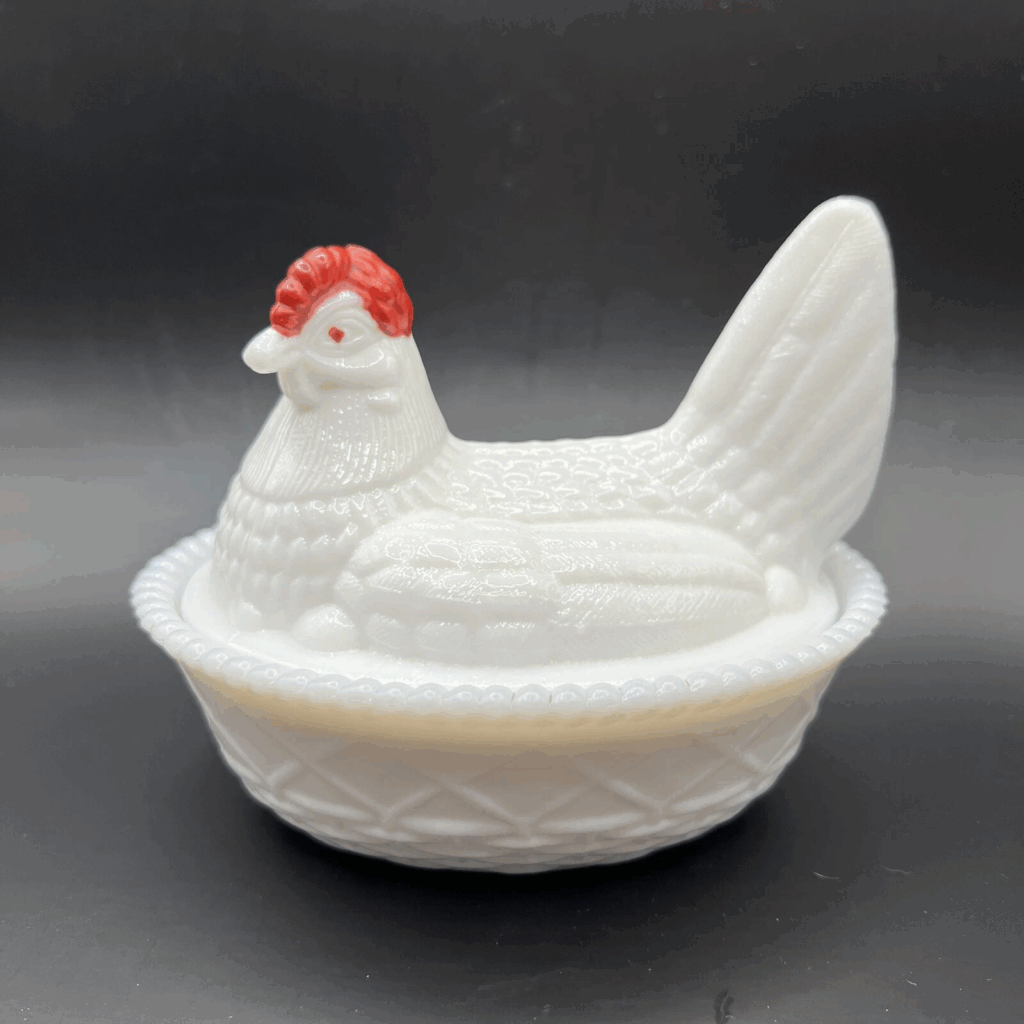
From roughly the 1940s through the 1960s, Westmoreland produced a series of hens on nest in white and various colors. The white milk glass version is common, yet certain sizes and decoration details create extra interest. Some hens have painted combs and eyes, while others keep a clean white look. These covered dishes served as candy or trinket holders on side tables and kitchen counters. Depending on factors such as color, size, and condition, prices often range from about $25 to $80, with special versions going even higher.
Collectors enjoy comparing different molds and decoration styles between hens. Westmoreland examples with clear marks on the bottom usually feel more desirable than unmarked copies. Tiny chips on the base may be tolerated if they are hard to see when displayed. Rare colors, such as certain pinks or decorated versions, can quickly raise the selling price. For people who love farmhouse or cottage style decor, paying higher sums for the perfect hen can feel completely reasonable.
Dithridge Victorian Milk Glass Lion’s Head Plate
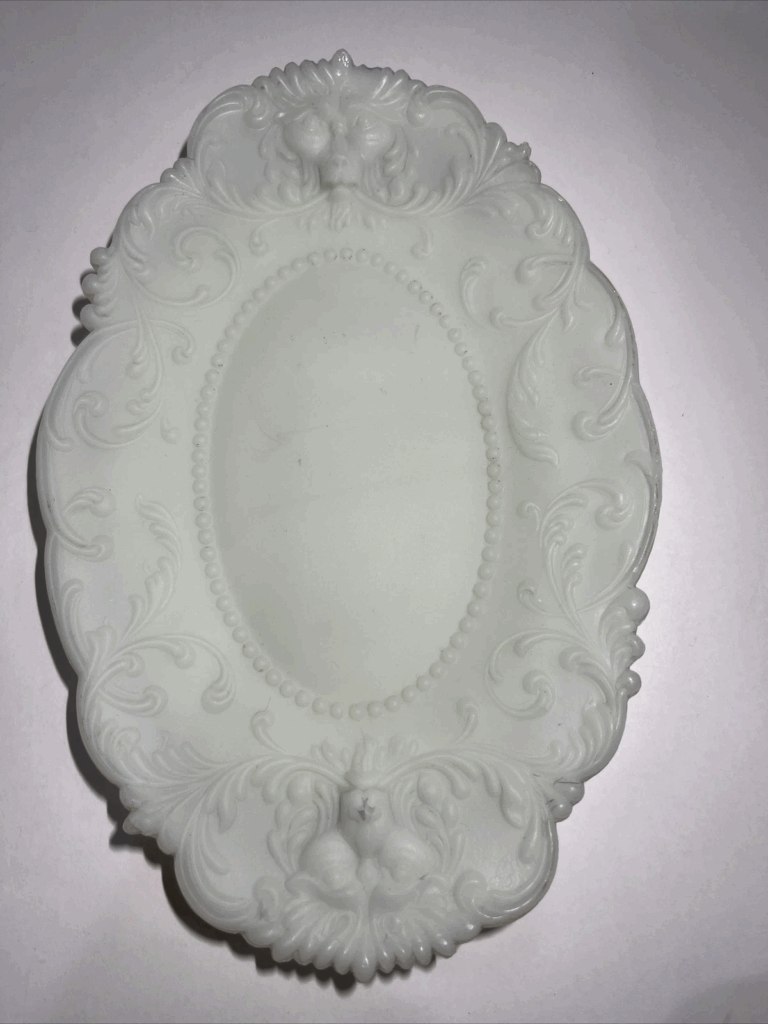
Dating to the 1880s, the Dithridge lion’s head plate represents another side of Victorian milk glass. This plate or small tray features lion head handles and molded decoration that feels both decorative and useful. Many examples are in soft white with a matte finish that differs from glossier mid century milk glass. These plates were likely used on dressing tables or as small serving pieces. While some recent sales show prices around $20 to $35, especially sharp examples from respected sellers can reach $40 to $80.
The appeal of this piece comes from its age and distinctive handles. Collectors of Victorian glass often look for items that tell a story about design trends of the period. Plates that show strong detail and no staining are more likely to attract multiple interested buyers. When paired with other nineteenth century milk glass, this tray can anchor a small display. Even with modest auction results, the right buyer may be willing to pay a higher price for a plate that completes a collection.
Owl Drug Company White Milk Glass Bottle
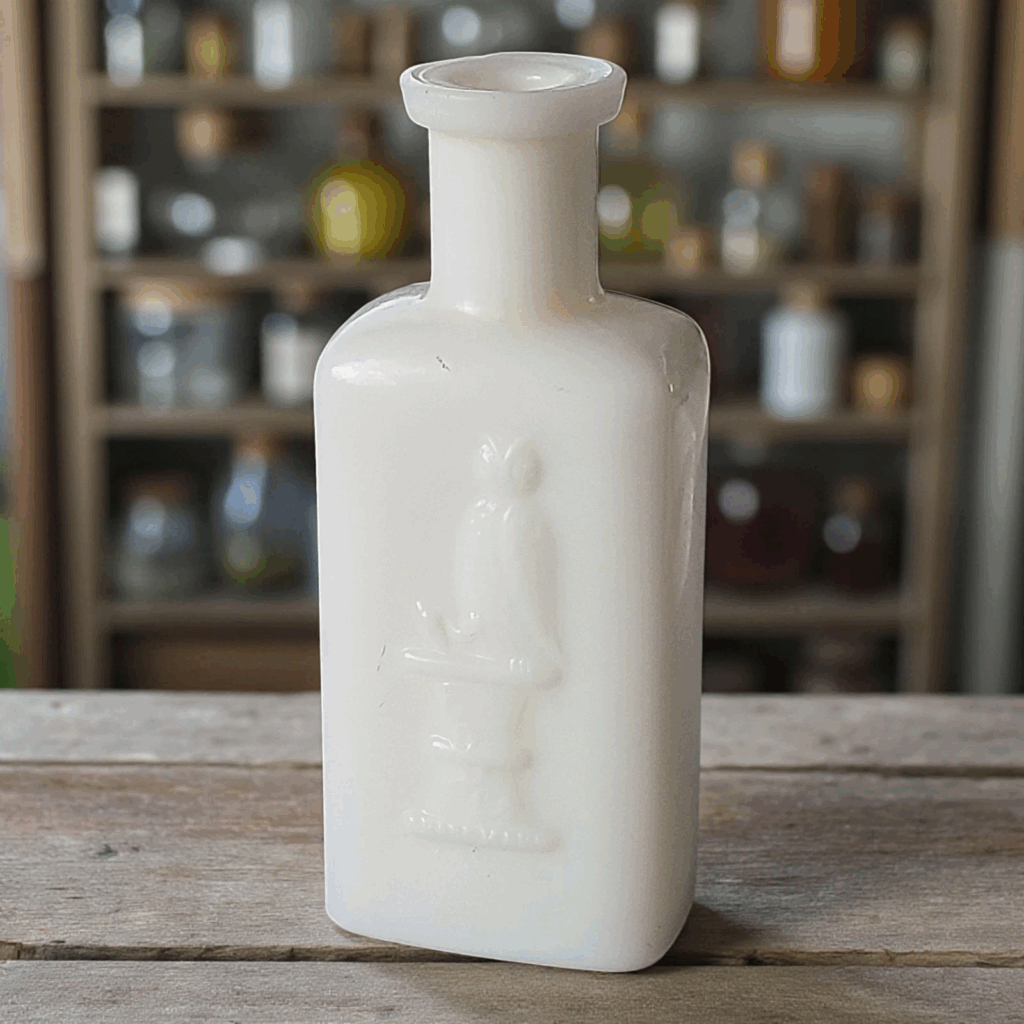
From the early twentieth century, white milk glass bottles made for the Owl Drug Company bring together pharmacy history and glass collecting. These bottles often feature an embossed owl on a branch along with company wording. They were once utilitarian containers for medicines and personal care products. Today, they feel like small pieces of advertising history on a shelf. Well preserved examples with strong embossing can sell for around $100 to $150, and sometimes more when condition is excellent.
Collectors of apothecary items and milk glass both chase these bottles. Chips at the lip or heavy staining can hold prices back, so clean examples are always welcome. When a bottle has clear embossing and no serious damage, sellers often receive quick interest. Some buyers enjoy grouping several sizes together to show variety in a single brand. For a piece that once sat quietly on a drugstore shelf, that level of attention and price can feel surprising.
This article originally appeared on Avocadu.
